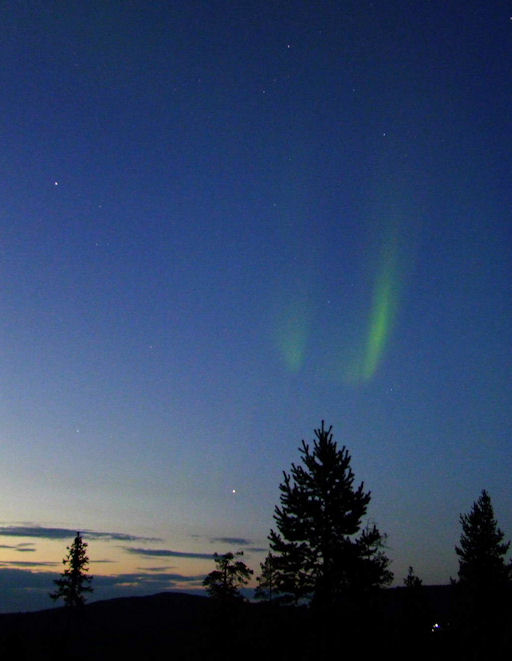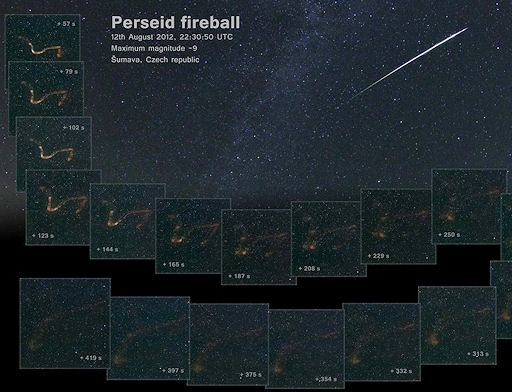Listen to radar echoes from satellites and meteors, live on listener-supported Space Weather Radio. | | |
CRACKLING SUNSPOT: A sunspot located on the sun's northeastern limb is crackling with impulsive C- and M-class solar flares. This could herald an uptick in solar activity as the region turns toward Earth in the days ahead. Solar flare alerts: text, phone.
RETURN OF THE ARCTIC AURORAS: It has been a while since sky watchers around the Arctic Circle have enjoyed the Northern Lights. Auroras are hard to see through the glare of the midnight sun. As summer comes to an end, however, aurora season is beginning again. Last night, B.Art Braafhart spotted a splash of green over Salla in the Finnish Lapland:

"Finally, after three nights hunting for 'the green lights,' I made the first catch of the new season," says Braafhart. "The nice temperature (+12C) was accompanied by zooming mosquitos around midnight. The apparition was brief, the colors thin and light, but after an absence of 4 months exciting again!"
More auroras could be in the offing tonight. NOAA forecasters estimate a 15% to 20% chance of polar geomagnetic storms on August 17th in response to the possible impact of a minor CME. Aurora alerts: text, phone.
Realtime Space Weather Photo Gallery
METEOR SMOKE: Researchers using NASA's AIM spacecraft have recently discovered that meteor smoke is a key ingredient of Earth's mysterious noctilucent clouds. "Meteor smoke" is the fine ashen debris left over when a meteoroid burns up in the atmosphere. On August 12th, during the peak of the Perseid meteor shower, Petr Horálek photographed a dense plume of the material twisting and turning over Sumava, Czech republic:

"The fireball that produced this smoke was magnitude -9, [almost as bright as a quarter moon]," says Horálek. "This could be the brightest fireball of the 2012 Perseids." The smokey trail was visible for more than five minutes before it finally dispersed.
If the AIM science team is correct, this smoke will drift through the upper reaches of Earth's atmosphere more than 80 km above the planet's surface. Up there, rare molecules of water will cling to the meteoritic particles, slowly gathering to form tiny crystals of ice until--voilà! A noctilucent cloud is born.
For more whiffs of meteor smoke, click on the link below:
Realtime Perseid Photo Gallery
[NASA video: The 2012 Perseid Meteor Shower]
Realtime Noctilucent Cloud Photo Gallery
[previous years: 2003, 2004, 2005, 2006, 2007, 2008, 2009, 2011]

